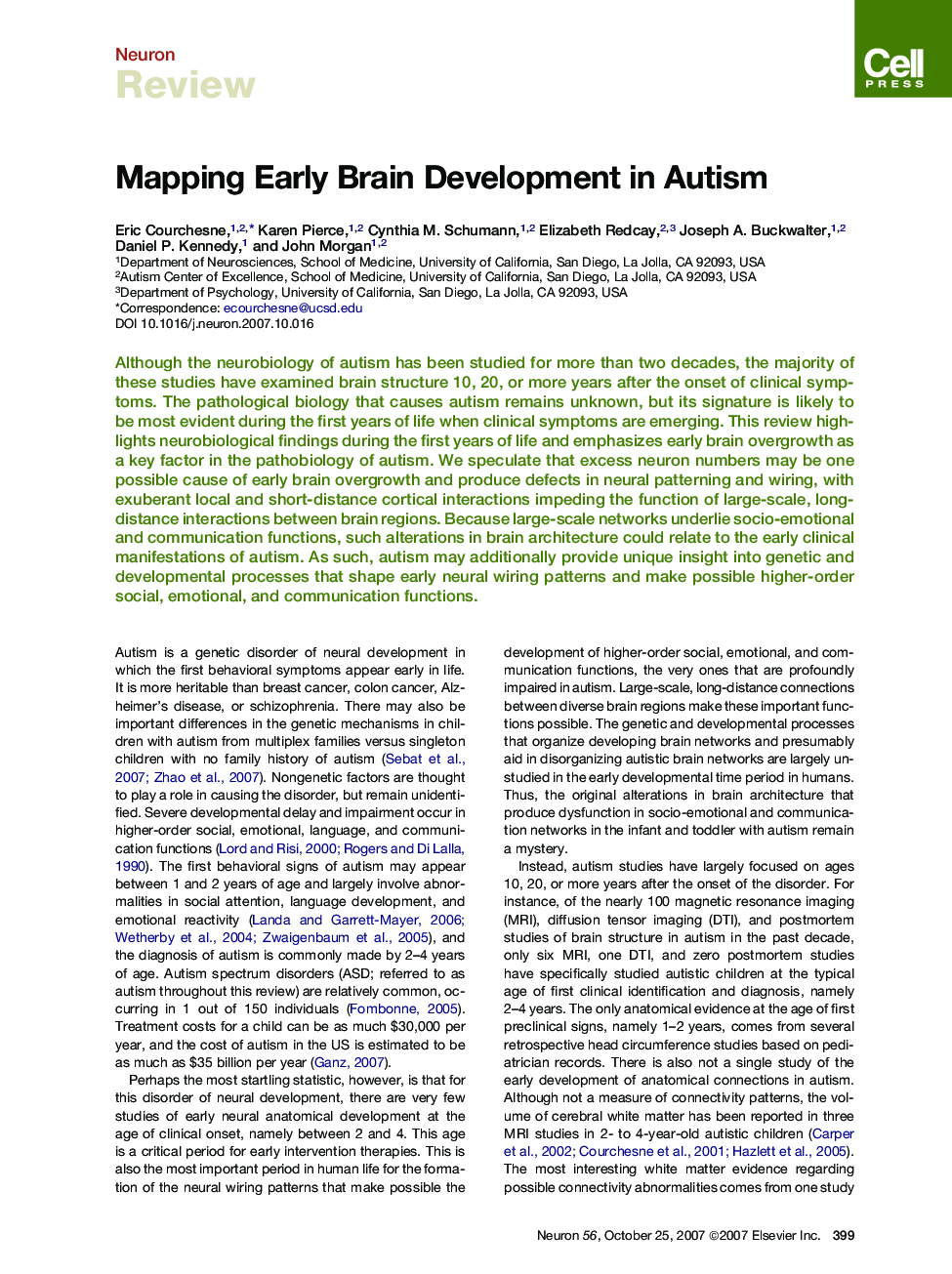| Article ID | Journal | Published Year | Pages | File Type |
|---|---|---|---|---|
| 4322621 | Neuron | 2007 | 15 Pages |
Although the neurobiology of autism has been studied for more than two decades, the majority of these studies have examined brain structure 10, 20, or more years after the onset of clinical symptoms. The pathological biology that causes autism remains unknown, but its signature is likely to be most evident during the first years of life when clinical symptoms are emerging. This review highlights neurobiological findings during the first years of life and emphasizes early brain overgrowth as a key factor in the pathobiology of autism. We speculate that excess neuron numbers may be one possible cause of early brain overgrowth and produce defects in neural patterning and wiring, with exuberant local and short-distance cortical interactions impeding the function of large-scale, long-distance interactions between brain regions. Because large-scale networks underlie socio-emotional and communication functions, such alterations in brain architecture could relate to the early clinical manifestations of autism. As such, autism may additionally provide unique insight into genetic and developmental processes that shape early neural wiring patterns and make possible higher-order social, emotional, and communication functions.
